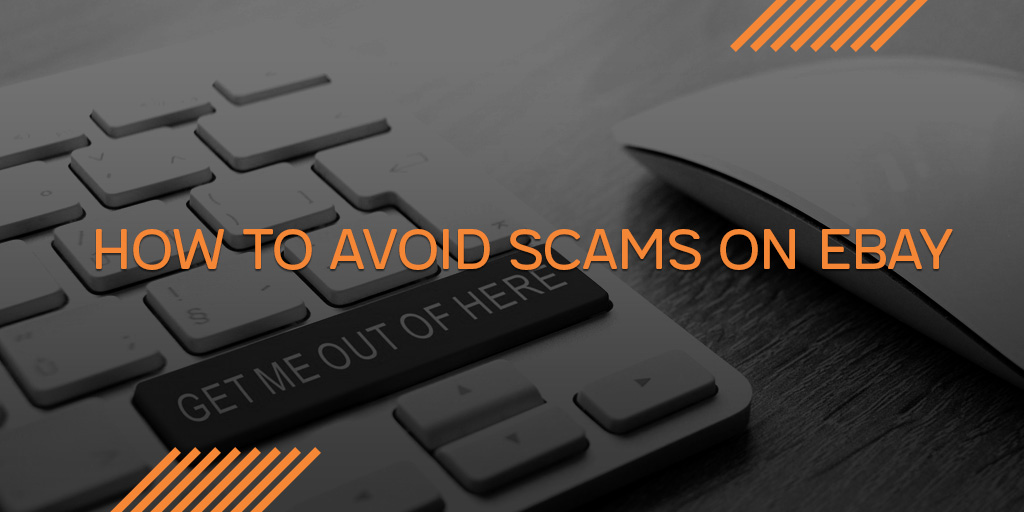
eBay is your business, and while most buyers are honest and sincere, there’s always a scammer or two lurking in the shadows, ready to take your products and leave you with nothing.
Making matters worse, it’s hard to check the legitimacy of buyers. Buyers don’t have the burden of needing massive feedback in order for you to sell to them. A legitimate buyer could have as little as 3 purchases, or as many as 300. Buying quantity alone doesn’t legitimize a buyer. So, how do you know who to trust and who not to trust?
The bad news is, you don’t. But the good news is, there are a few time tested strategies to identify potential scammers and avoid them like the plague. These tips won’t guarantee that you’ll never get burned, but they will help reduce your scam exposure dramatically. Let’s get started by identifying the most common scam artists.
The “Send Me a Replacement or Else” Buyer
This is the type of buyer who purchases a product, refuses to send it back, and then threatens to leave a bad review if you don’t send a replacement.
Here’s how to avoid this scam: Create a clear and thorough return policy. Get specific, explain the time frame for accepting returns, and list the conditions. If you don’t intend on accepting returns, you still need a return policy that states that, too.
Keep in mind that eBay’s Buyer Guarantee still protects the buyer if the item doesn’t match the description, regardless of your return policy. So, be very descriptive about your product, too.
The “I Sent It Back Even Though You Never Received It” Buyer
Sometimes, buyers initiate a return. You, in good faith and being proactive, process the return. The only problem? The item never makes it back. Now, the scammer has the item, the money, and there’s nothing you can do about it.
Here’s how to avoid this scam: Don’t process the return of funds until after you receive the product. You may also consider instituting a restocking fee to recoup some of your losses.
The “I Can’t Pay With PayPal” Buyer
Every blue moon, you’ll get a sob story from a buyer who can’t possibly use PayPal. Perhaps they’re banned, or for some crazy (but creative) reason, they simply don’t have access to PayPal. Now, they want to send you a check.
They’ll offer to send you a cashier’s check. You receive it, but it’s more than the value of the item. Oops! Can you send that overage to the buyer via wire transfer or Western Union?
Yeah, no. This is the quickest way to defraud you. It takes weeks, sometimes longer, for banks to verify cashier’s checks, and if the money doesn’t come through (for any reason), you’ll be held responsible.
Here’s how to avoid this scam: Never ever accept checks, money orders, or anything outside of PayPal or major credit cards. Don’t send the package until you’ve verified receipt of the payment. Also, never complete eBay sales off of eBay– it’s for your protection along with the buyer.
The “I Never Received the Item” Buyer
Some scammers prey on new eBay sellers who aren’t used to selling and have no clue about delivery confirmation.
Here’s how to avoid this scam: For items valued over £750, eBay requires a signature confirmation, but it’s probably a good idea to require delivery confirmation (including signature) for your own protection. Be sure to include that delivery confirmation is required somewhere in the item description, too. This will deter scammers from targeting you. Also, keep this confirmation proof for two months, in case the buyer disputes receiving the item.
The “It’s Not Authentic” Buyer

Selling items that demand authenticity? From Legos to Chanel, it’s a must that you have all of your papers in order, along with copies to keep in case a dispute is ever initiated.
Here’s how to avoid this scam: Keep your original paperwork (receipts, certifications, official statements of authenticity) in case you need to defend yourself. If you must give away your original paperwork with the item, keep a copy.
The “You’ve Just Been Selected” Buyer
You receive an email that asks you to list and sell items for another buyer. They’ll pay you for your trouble.
You list the item. You receive the money. You send most of the money to the contact and keep a little for yourself. They handle the shipping. Sounds great, except for the fact that the buyer never receives the product. The buyer demands their money back, and they will get it– and you’re worse for the wear.
Here’s how to avoid this scam: Delete any message that sounds too good to be true. It usually is.
The “Can You Ship to Another Address” Buyer
A buyer who wants you to send to an address that’s not on his or her PayPal or credit card account.
Here’s how to avoid this scam: This is a huge red flag. Insist on sending directly to the address on the PayPal or credit card account– and stipulate this in your terms of agreement.
The “I’m Sending the DHL Driver to Pick It Up” Buyer
Another buyer to be cautious of is the one who sends the DHL driver to pick up the package before they’ve actually paid for it. They pay for shipping, but they haven’t actually paid for the item. This scam relies on you not being fully aware of what’s going on.
Here’s how to avoid this scam: Keep an eye on all of your pick ups and don’t allow multiple people to send packages. Cut down on potential confusion by designating just one person to prepare and send packages.
The “You’ve Just Got Paid” Buyer
 There’s nothing sweeter than an email confirmation from PayPal telling you that you’ve gotten paid. The only problem is, those emails aren’t always coming from PayPal. They may be part of an elaborate ruse to trick you out of your item.
There’s nothing sweeter than an email confirmation from PayPal telling you that you’ve gotten paid. The only problem is, those emails aren’t always coming from PayPal. They may be part of an elaborate ruse to trick you out of your item.
Here’s how to avoid this scam: Don’t just believe the email. Always check your PayPal account before sending an item to make sure that the payment has actually gone through. Sure, it’s an extra step, but it’s worth it. Also, NEVER click on a link in a “PayPal” email. Always close the email and open PayPal in a separate tab.
The “Let’s Meet Up” Buyer
You close a transaction on PayPal, and then the buyer calls you to say that they’ll be in the area and would prefer to meet and pick up the item in person. You agree to refund their postage costs. All goes well, until you’re slapped with a “I never received my item” dispute. You can’t prove that you actually met, and now there’s no delivery confirmation (or signature on delivery) to prove that the buyer is in receipt of the item. You’re screwed.
Here’s how to avoid this scam: Avoid meet ups at all costs. But, if you do meet up, consider taking a photo of the buyer with the item or create a have a written receipt and then have the buyer sign for the item (make sure it matches the signature on the driver’s license). It’s also a good idea to confirm the meeting before it takes place via email.
Final Thoughts
Most buyers on eBay are sincere and don’t want to scam you out of money and product. But, it’s better to be safe than sorry, so take proceed with caution. Use the above tips to recognize potential scams before they occur and protect yourself.









Be the first to leave a comment. Don’t be shy.